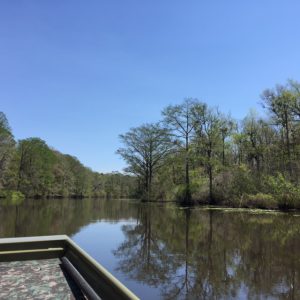
This week commemorates the 50th anniversary of the very first Earth Day, a public celebration of the planet’s value with an emphasis on environmental stewardship. Devastating air and water quality problems throughout the United States stirred the creators of Earth Day 1970 to act. Very quickly, the effective advocacy inspired by the event led to the creation of both the Environmental Protection Agency (December 1970) and the Clean Water Act (1972) .
Locally, we have had a group of community volunteers speaking up for our waterways that entire time. The Bream Fishermen Association (BFA) formally chartered in January 1970, beginning as a loose affiliation of anglers who were alarmed at the reduction in local water quality, seagrass, and fish and invertebrate populations.

Highlighted in Jack Davis’s Pulitzer Prize-winning book, The Gulf (a must-read for anyone who loves the Gulf Coast), Davis tells the story of BFA founding member Ernie Rivers, who had his Naval Air Station Pensacola aerial photography students take photos of discharge leaving industrial plants. His co-founder J.D. Brown and a team of volunteers monitored water quality throughout local bays and bayous, sharing their data with state and federal authorities repeatedly until waste treatment and industrial facilities were finally forced to clean up.
Over the years, the BFA has maintained a close watch on our waters, alerting the public and state regulators to problems throughout the watershed. The BFA is still an active organization, meeting regularly to discuss important environmental issues. Membership is $20/year, and open to anyone who supports their four objectives: “1) Improve the quality of our environment. 2) Protect and maintain our present wilderness type lakes, rivers, swamps, marshes, bays, forests, and beaches in their natural undeveloped state. 3) Advance the causes of plant, marine, and wildlife preservation. 4) Provide Environmental outreach and education.”
 0
0
